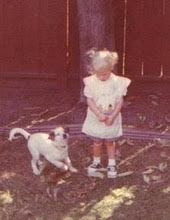
One of the best perks with positivity-based training is that your sessions will be ... positive! Training your dog should be fun for you both. As with any relationship, good communication is key. The more you understand how a dog thinks and learns, the more effectively you can communicate. Here are some things to remember while working with your dog:
1. Behavior that is rewarded is most likely to reoccur. Dogs do what works. For example, if your dog is rewarded with praise and a treat for sitting, he is more likely to sit the next time you ask. If he has learned that jumping will earn your immediate attention, he will keep on jumping (because your attention is his reward.)
2. Dogs learn by association. When training, timing is key. It is important to reward immediately following the desired behavior. This also applies in reverse: reprimanding your dog for something he may have done hours ago (like destroying a shoe) is pointless. Because of the gap in time, your dog is unable to associate your reprimand with what he's done.
3. Reward behaviors you want, rather than punishing behaviors you don't want.
4. Beginners should practice in low-distraction areas.
5. Be sure to train in different locations inside the house and outside, too, so your dog understands location is not linked to the command (some dogs will learn to sit-stay "only in the living room in front of the red chair," because they've only ever practiced the sit-stay in the living room in front of the red chair!)
6. Say the command word only ONCE. If your dog does not respond to the command once, don't repeat it over and over; instead, take a moment, then move to another location and start again. Dogs (much like humans) tend to tune-out repeated phrases (I'm sure we've all heard poor Tommy's mom at the supermarket: "Tommy, stop it. Tommy, STOP it. Tommy, STOP it now! Tommy, STOP it!.... Now, Tommy, STOP IT!"... Tommy stopped listening a looooooong time ago. By repeating a command word, we cause a similar effect with dogs.)
7. Jackpot! The Jackpot is a really superduper special reward: the MOST favorite of his treats, or the BESTBEST toy he loves. Your dog can earn this amazing prize by doing something wonderful. If your dog is struggling with a command, and suddenly has a breakthrough, this is when he gets the jackpot. Spoil him rotten with praise, petting, and three or four of those treats one after the other. Jackpotting makes a huge impression, and he's therefore more likely to perform the behavior better than usual the next time.
8. Find an alternate behavior. When you want your dog to stop doing something, give him something else to do. If he jumps up on you, have him sit. If he's chewing on your furniture, give him a chew toy. Change a negative into a positive by giving your dog a task to succeed at.
9. Take baby steps. Build on your dog's success in small increments. Don't expect too much too soon. For example, when learning the sit stay, have your dog hold the stay for two seconds. If that's successful, the next day work on three seconds. If that works, move on to four seconds.
10. Phase treats out gradually. Don't Worry... you will not need to carry treats around with you for the rest of your life! Use treats every time, at first. As your commands become solid, start replacing treats at random intervals with rewards like petting and praise. Over time, with much repetitive practice, your dog will begin to respond automatically (just as when we stop at red lights, we don't really have to think about it... we've done it so many times it's simply automatic.)
11. Keep it short. Your practice sessions can be about 5 minutes long, a few times a day (you might want to do them during commercial breaks while watching TV!) Focus on one behavior per session. Always stay positive. If you're feeling frustrated, go back to a command your dog is great at, end your session on a high note, and practice again when you're in a better frame of mind.
12. Be consistent. Having clear rules and a schedule your dog can count on inspires his confidence in your leadership. For example, if one person in the household wants the dog on the sofa, and another person says "no dogs on the sofa!", you MUST decide on one consistent universal rule. Rules and boundries help both children and animals feel secure.
13. Exercise is key. Many behavior problems can be eased by making sure your dog has ample exercise. Burn off that frantic dog energy (or apathy!) with sensory-stimulating physical activities like lots of looong walks ("lots" typically being at least two times daily, and "long" typically being at least 20 minutes- 1 hour per walk.) You can also add in running time, catch, frisbee, freeze tag or agility coursework. You will be amazed by how much a simple increase in excercise works wonders.









No comments:
Post a Comment